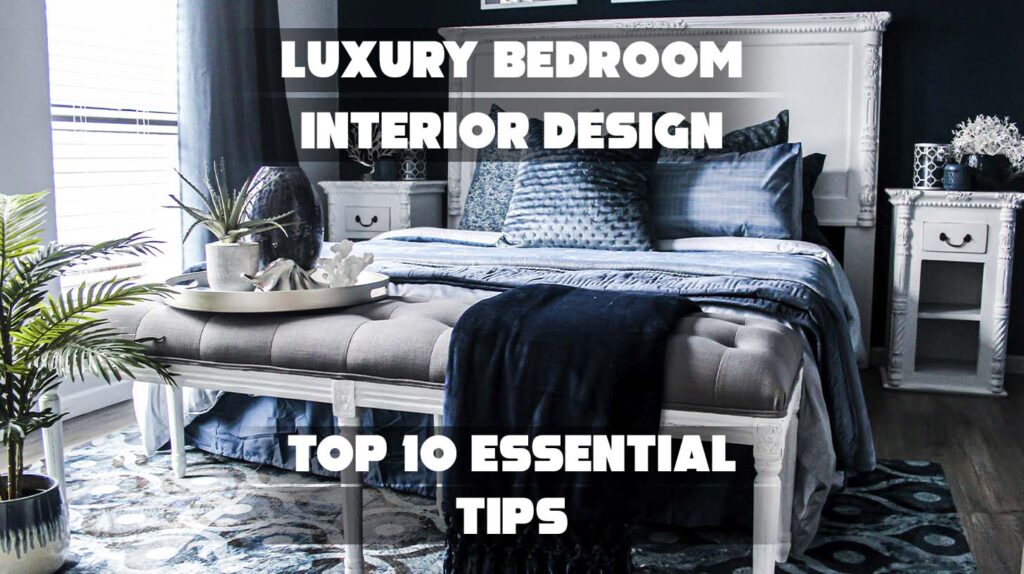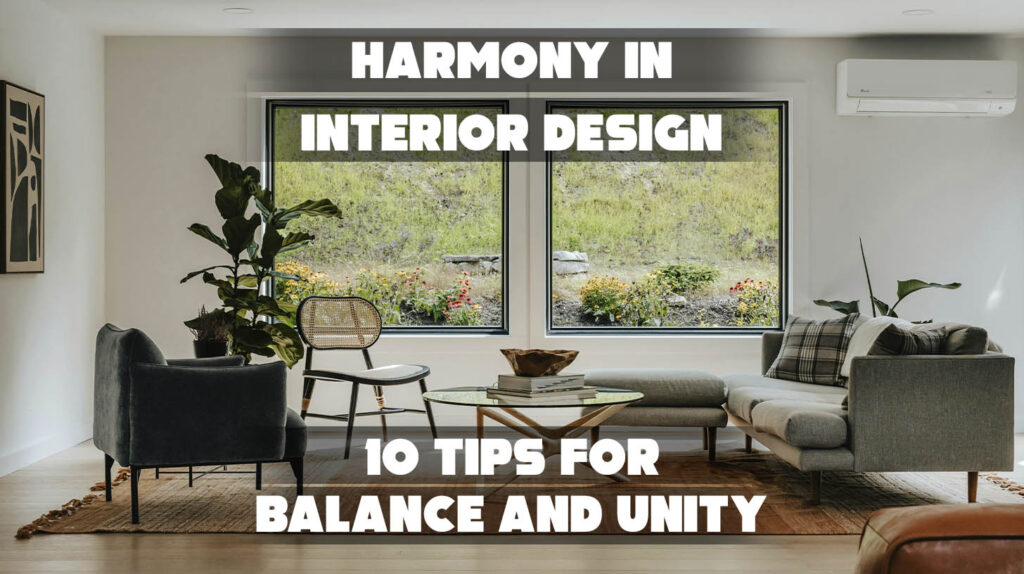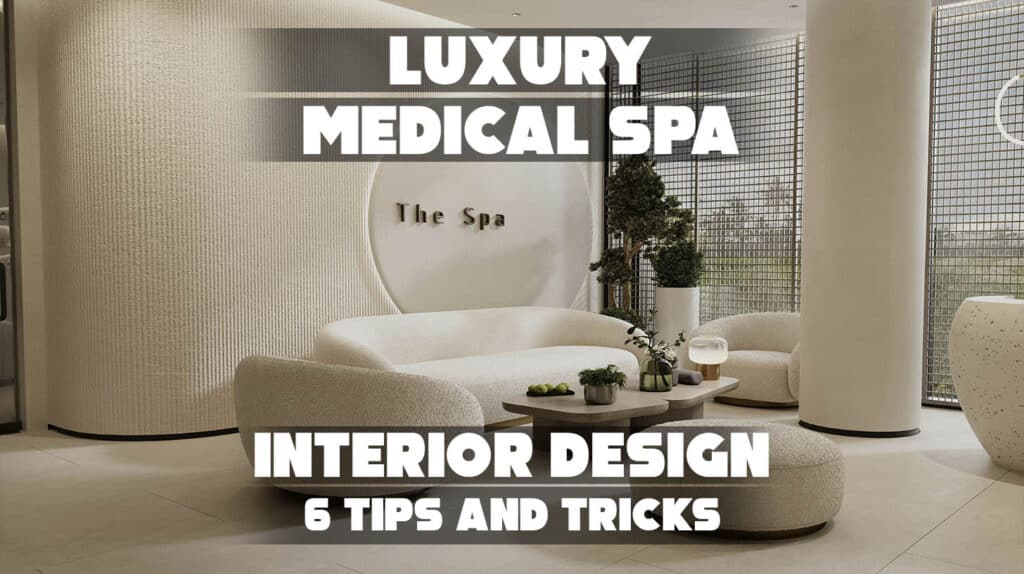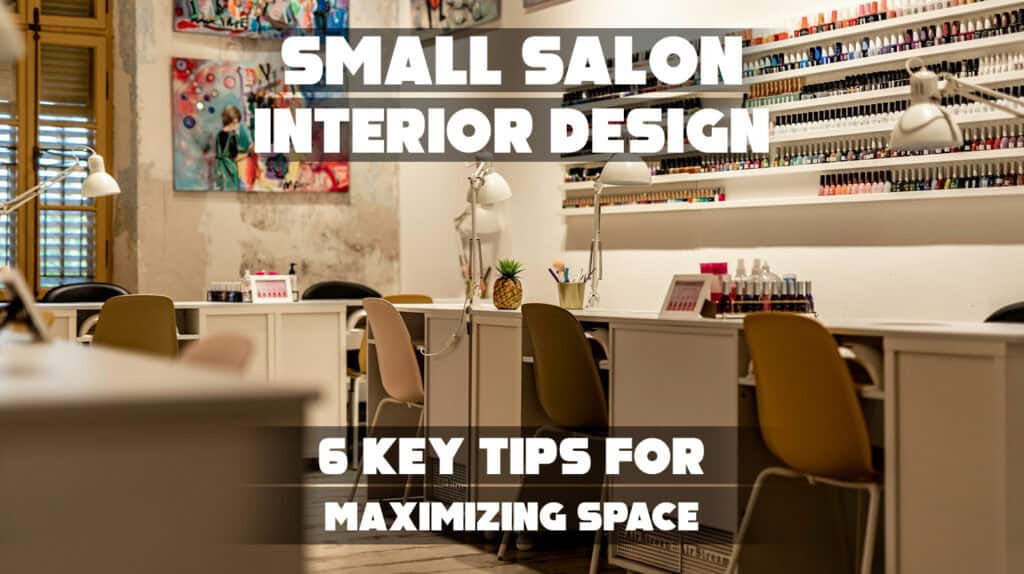Have you ever dreamed of creating a warm, historic home but felt overwhelmed by where to start? You’re not alone — many struggle to balance authentic medieval style with modern comfort.
Luckily, you’re the hero of this journey, and we’re here as your trusted guide, ready to walk you through proven techniques based on deep historical knowledge.
In this article, you’ll learn how to:
- Choose the appropriate pattern for your space
- Mix other geometric patterns seamlessly
- Enhance rooms with soft furnishings for warmth and texture
Ready to begin? Let’s explore how you can transform your home into a timeless masterpiece!
1. Foundations of Medieval Interior Design
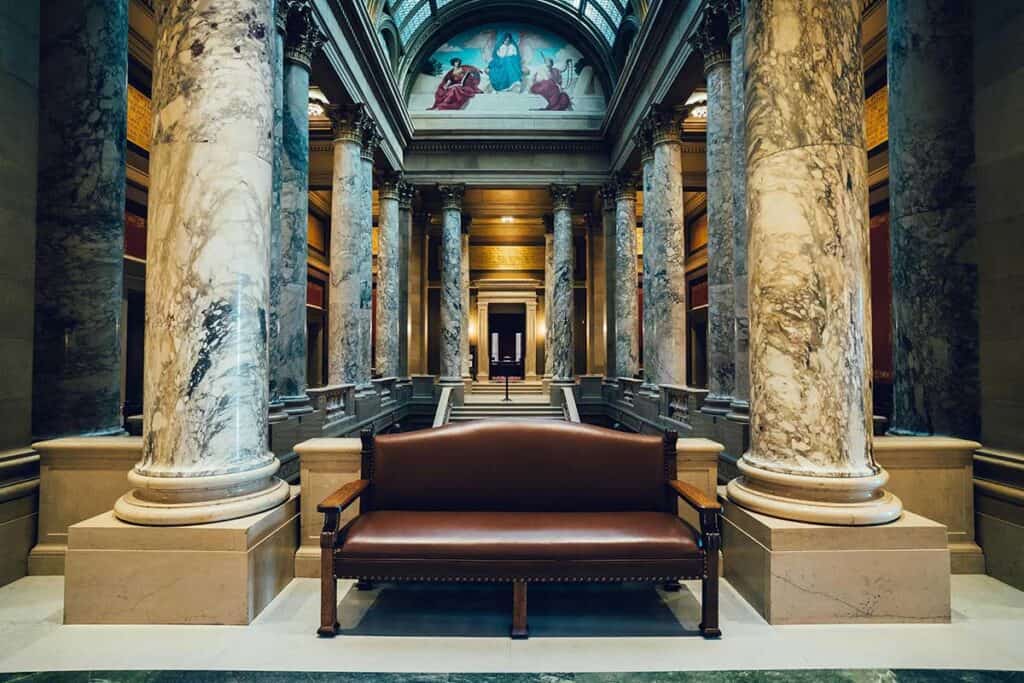
Medieval interior design reflects the practical needs and cultural values of the medieval era. It combines structural elements, decorative details, and color schemes rooted in both natural materials and symbolic meanings.
The designs sought to create functional, warm, and often dramatic spaces, especially within castles and religious buildings.
See also Line In Interior Design
Historical Context and Origins
Medieval interiors primarily developed between the 5th and 15th centuries, during a time of social change and religious influence. Many surviving examples come from ecclesiastical buildings like churches and monasteries, although secular settings such as castles and manor houses also show distinctive features.
The design approach was shaped by the availability of materials and construction techniques, with stone and wood as dominant building elements. Interiors were functional and modest at first, evolving toward more elaborate displays of craftsmanship and wealth, especially in noble homes.
Natural light played a limited role; windows were small and often covered with translucent materials like horn or thinly cut stone. This influenced the choice of interior decorations, which focused on tapestries, wall paintings, and mosaics to add color and texture to otherwise dim spaces.
Key Elements and Influences
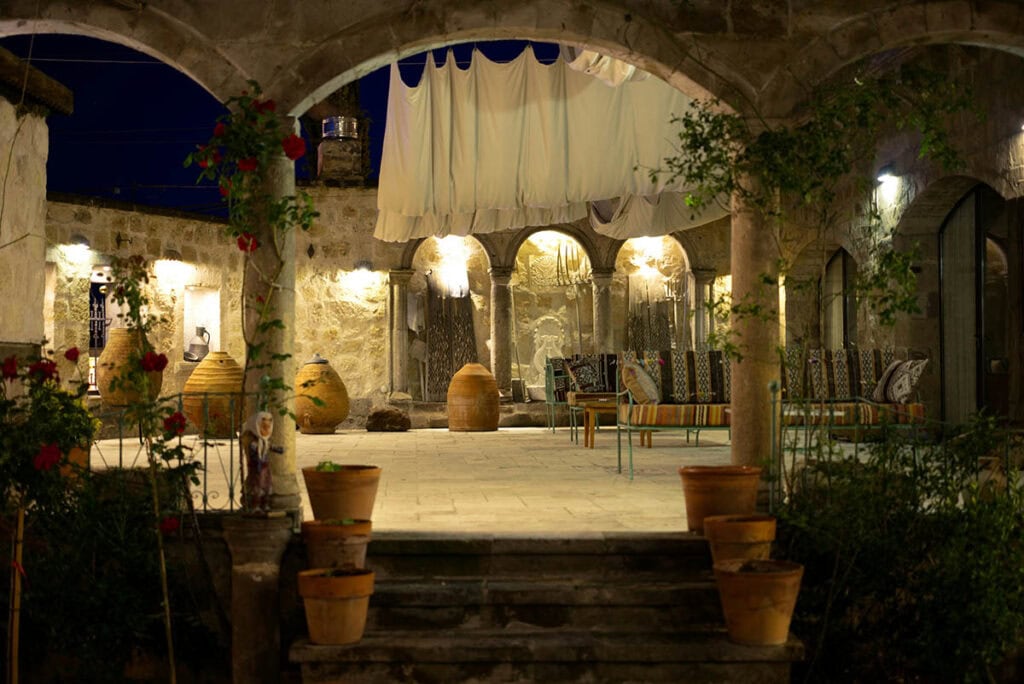
The defining features of medieval interiors include heavy wooden furniture, exposed wooden beams, and stone or plaster walls. Furniture was robust and designed for durability, often adorned with carvings or simple patterns.
Textiles were vital for adding warmth and color. Tapestries were used not only for decoration but to insulate against cold stone walls. Chairs and benches were often draped with textiles, combining comfort with visual appeal.
Religious and heraldic motifs influenced patterns, frequently incorporated into floor tiles, wall decorations, and furnishings. Gothic and Byzantine artistic traditions played a significant role, especially in ecclesiastical interiors, adding symbolic richness through stained glass and mosaic work.
Color Palettes and Materials
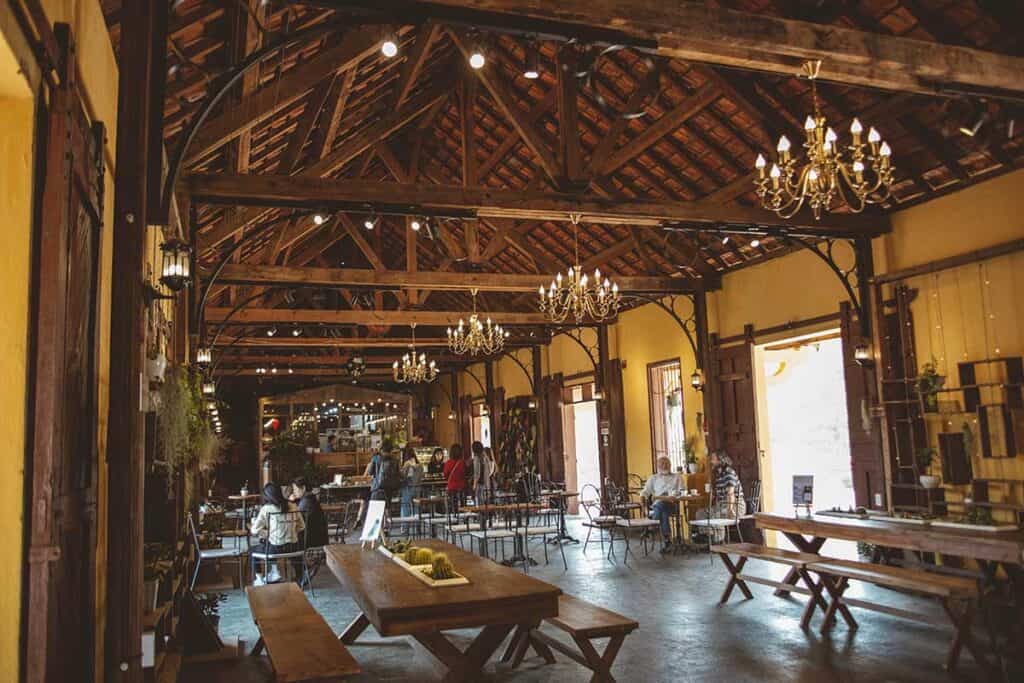
Color schemes in medieval interiors relied heavily on natural pigments derived from minerals and plants. Whites were often built from egg white mixed with powdered minerals, providing a base for brighter colors in wall paintings. Deep reds, blues, and golds were popular, especially in tapestries and decorative elements.
Materials like stone, wood, wool, and leather were commonly used. Walls were often stark but softened and decorated with layered fabrics. Metalwork, such as iron fittings on doors and furniture, served both functional and ornamental purposes.
The use of textiles, wood paneling, and painted surfaces created interiors that were visually rich despite limited light sources. These choices balanced functionality with an attempt to express status and identity within the constraints of the medieval building environment.
2. Architectural Features and Layouts
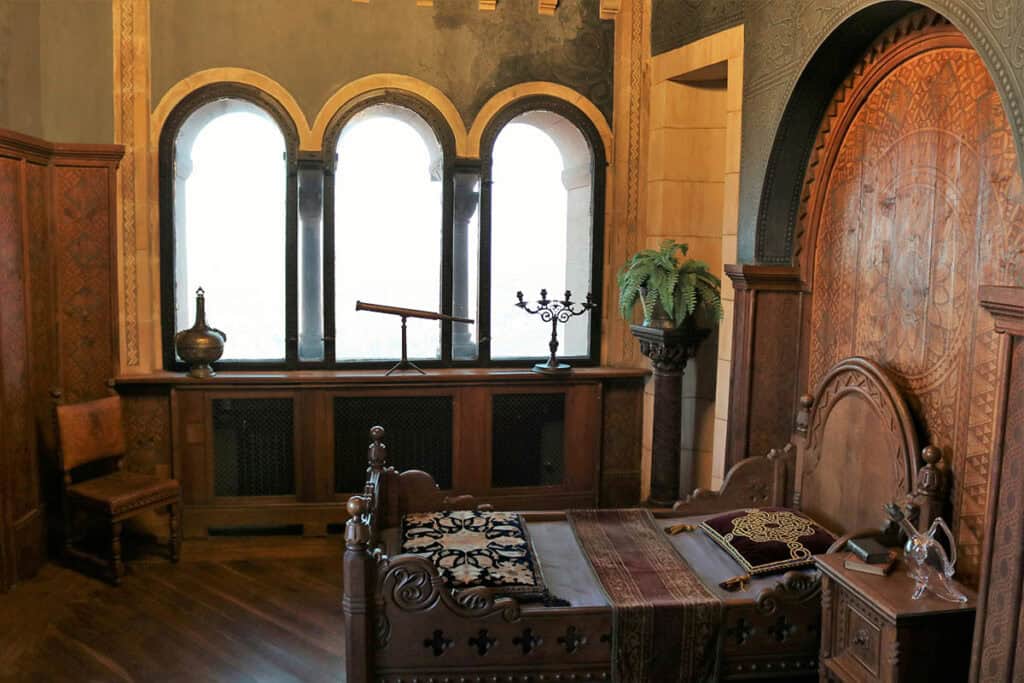
Medieval interiors were grounded in robust construction methods that emphasized durability and defense. These spaces often balanced stark structural elements with functional design, showcasing characteristic materials and architectural forms that defined the period.
Stone Walls and Timber Framework
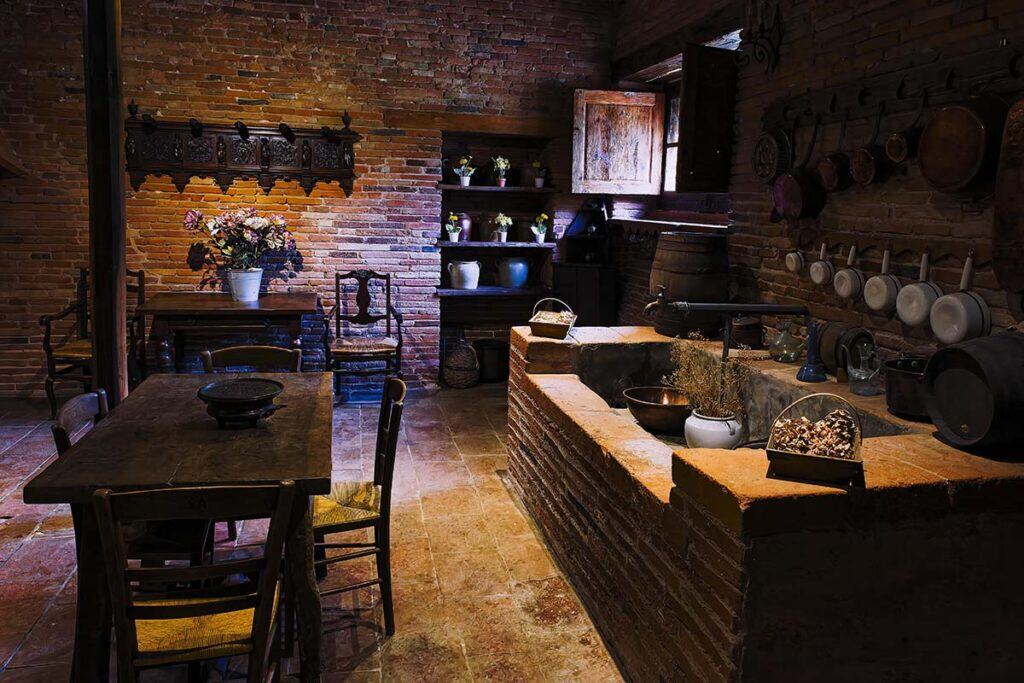
Medieval structures primarily relied on thick stone walls, which served both as protection and insulation. These walls were often left exposed inside, revealing the rugged texture of the stone and reinforcing the castle or manor’s sturdy appearance.
Timber framework complemented stone by supporting roofs and upper floors. Heavy wooden beams frequently remained visible, contributing to the interior’s rustic aesthetic. The combination allowed for large rooms with minimal internal supports, creating open spaces such as the great hall.
Stone fireplaces were common and built into walls, providing warmth and a focal point for social gatherings. Alongside stone, ceramic tiles sometimes adorned floors in higher-status settings to add pattern and color, though plain stone slabs were more frequent.
Vaulted Ceilings and Arches
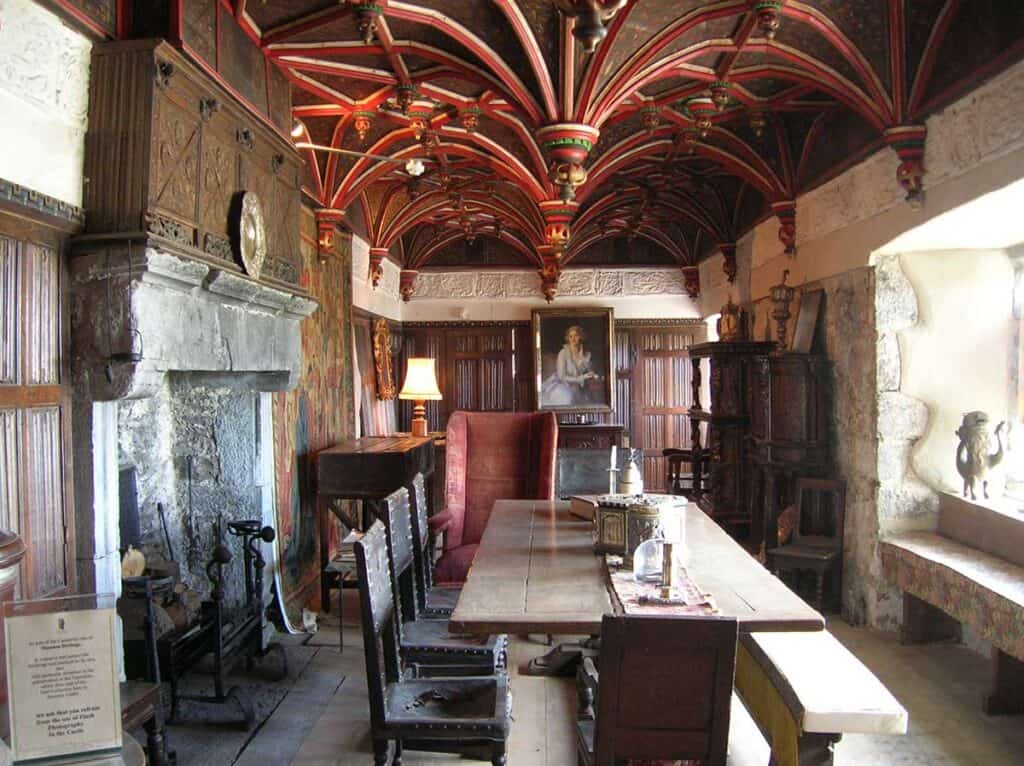
Vaulted ceilings were a distinctive feature, especially in grand halls and chapels. These ceilings used intersecting stone ribs to create height and strength, making rooms feel spacious. The design also improved acoustics, useful for public gatherings or ceremonies.
Arches, particularly the pointed Gothic style, provided structural support while adding visual interest. They often framed doorways and windows, balancing structural utility with architectural elegance. Rounded Romanesque arches appeared earlier and lent a robust solidity to smaller spaces.
These elements combined to create interiors where verticality and stonework emphasized permanence, crucial in an age of conflict and display of power.
Medieval Floor Plans
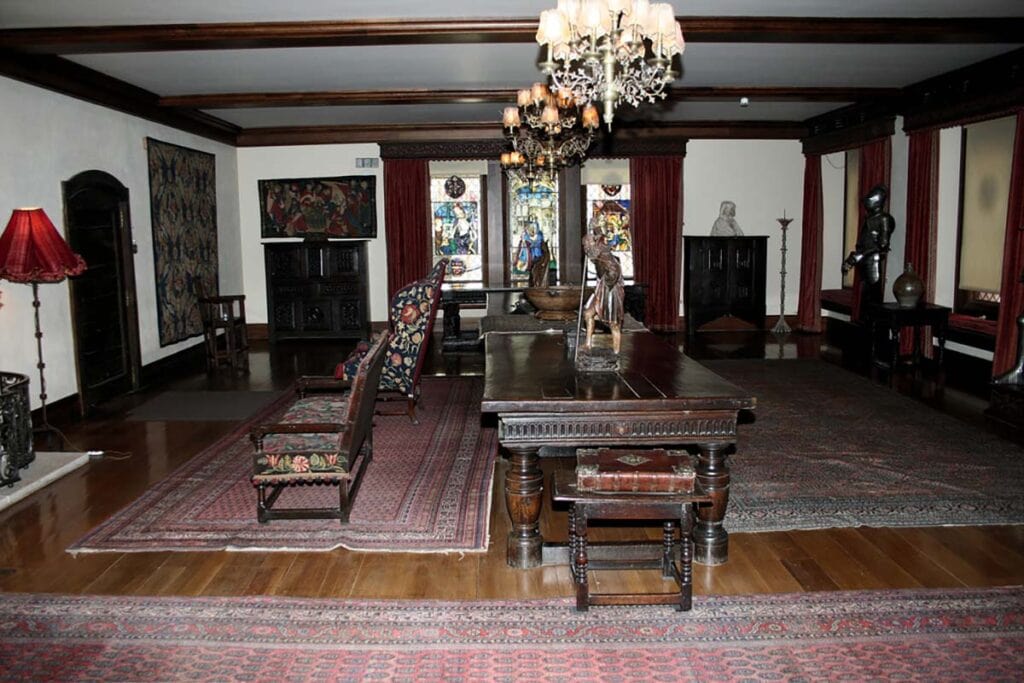
Medieval floor plans prioritized functionality and defense, often centering around the great hall, which served as the main living and gathering space. The hall connected to service rooms like kitchens and storage chambers, designed for efficient workflow.
Private chambers were usually set apart, sometimes above or adjacent to the main hall, offering increased privacy and security. Keeps or donjons formed the heart of castles and included living quarters, storage, and military defense points.
Layouts also incorporated courtyards and walled gardens, acting as both protective barriers and peaceful retreats. These outdoor spaces might feature herb gardens and stone paths, blending practical needs with aesthetic considerations typical of the medieval era.
See also Famous Irish Landmarks
3. Medieval Deign Furnishings and Decorative Elements
Medieval interiors were defined by a combination of functional and ornamental pieces that reflected the materials and artistic trends of the Middle Ages. Emphasis was placed on durability, natural materials, and intricate details that enhanced the ambiance of stone rooms lit by stained glass windows or natural light.
Period-Appropriate Furniture
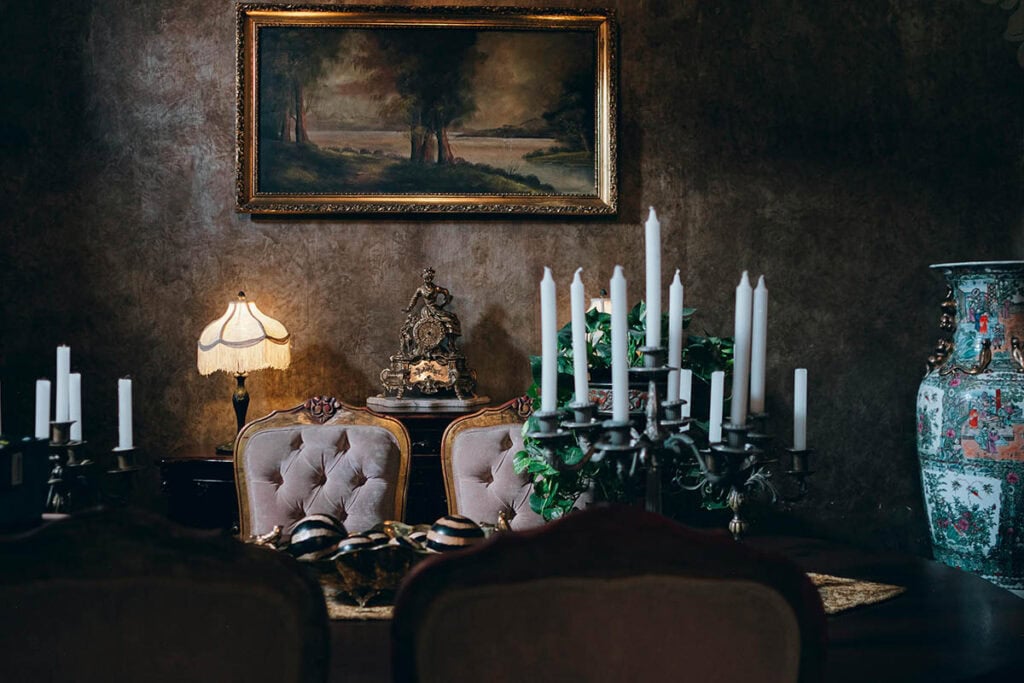
Furniture in medieval homes and castles was typically made from solid wood, such as oak or walnut, valued for strength and longevity. Pieces were heavy and sturdy, designed to endure daily use. Common items included large trestle tables, benches, chests for storage, and high-backed chairs.
Ornamental carving was important, often featuring geometric patterns or heraldic motifs typical of Gothic style. Furniture surfaces were usually left in natural wood tones or finished with simple stains rather than bright paints. The focus was on practicality with touches of medieval charm through detailing.
Tapestries and Wall Hangings
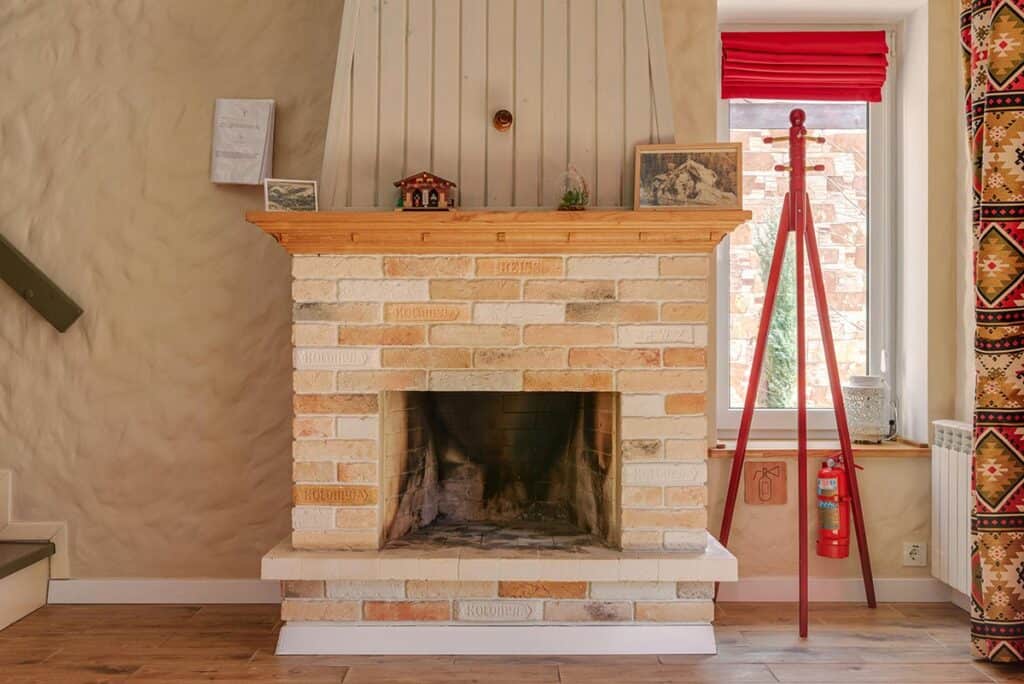
Tapestries played a crucial role in both decoration and insulation within stone buildings. Elaborate woven artworks depicted biblical scenes, heraldry, or floral patterns and added color to otherwise austere walls. Their thick fabric helped retain warmth and reduce echoes.
Rich textures and regal patterns were common, often enhancing the gothic interiors’ verticality and intricate details. Walls might also feature painted panels or tiled lower sections. These decorative elements combined to create a layered aesthetic balancing art with function.
Lighting Fixtures and Chandeliers
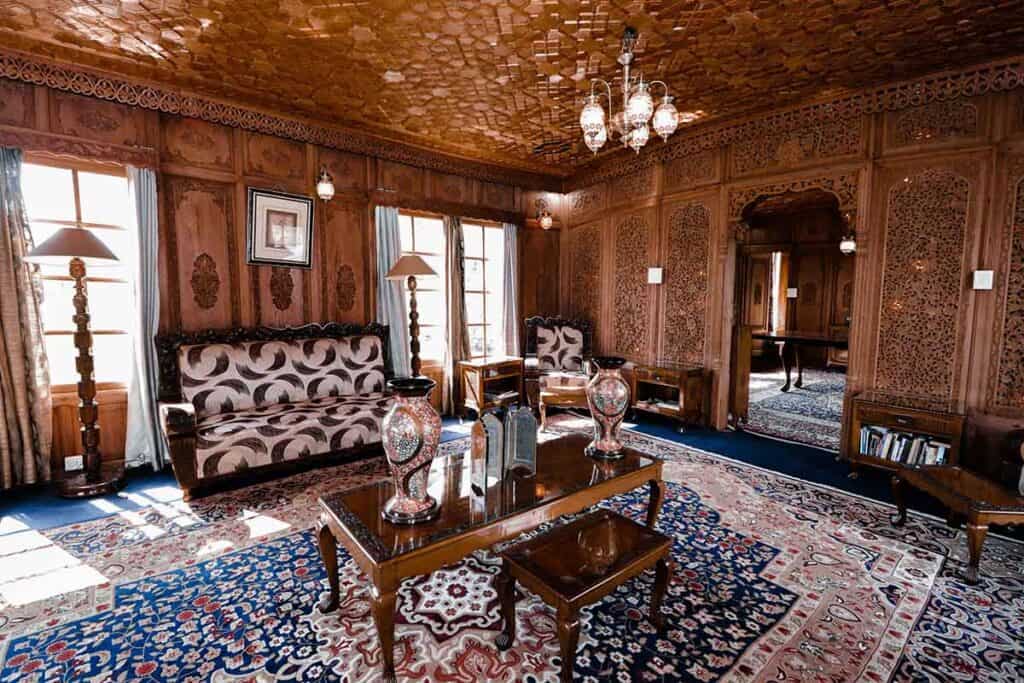
Lighting in medieval interiors relied on natural light filtered through stained glass windows during the day, contributing colored illumination. At night, candles and iron chandeliers provided the main sources of light.
Chandeliers were typically wrought iron, simple yet strong, often hanging from vaulted ceilings with chains.
Candle sconces or candelabras were mounted on walls, strategically placed to emphasize architectural features and artworks. This interplay of light and shadow reinforced the dramatic atmosphere associated with Gothic style.
4. Textiles, Patterns, and Finishes in Medieval Design
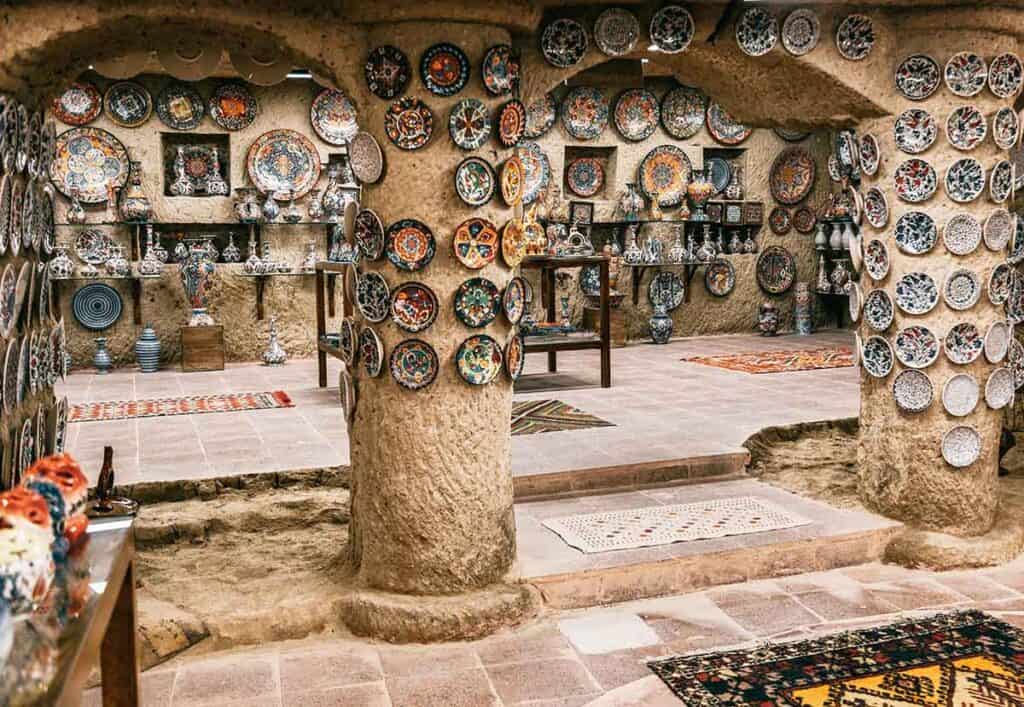
Medieval interior design relied heavily on rich textiles and intricate decorative elements to create warmth and visual interest in large, often stone-built spaces. Patterns and fabrics introduced color and texture that softened the austerity of stone fireplaces and tiled floors commonly found in gothic interiors.
Woven Fabrics and Rugs

Textiles such as wool, silk, and linen were primary materials in medieval interiors. These fabrics were often imported from places like Venice and Genoa, contributing to the luxury of high-status homes. Wool provided durability and warmth, while silk added refinement and was used in more decorative contexts.
Oriental carpets, both knotted and flatwoven types like Kilims, were prized floor coverings. These rugs introduced elaborate geometric and floral patterns in deep reds and golds, harmonizing with the colors found in furniture pieces and wall hangings.
Such textiles helped balance the cold surfaces typical of medieval architecture.
Heraldry played a significant role in textile decoration during the medieval period. Fabrics were often embroidered with family crests or symbolic motifs, reinforcing social identity and status. These designs were integrated into wall tapestries, cushions, and curtains, adding intricate details that were both decorative and meaningful.
Embroidery used fine threads in vibrant colors, emphasizing motifs against backgrounds of deep reds, blues, and golds. This made each textile piece a statement within a room, contributing to the layered complexity seen in gothic style interiors. The craftsmanship in embroidery reflected the skill and artistic traditions of the time.
Finishing Touches

Finishes in medieval interiors included not only textile edges and hems but also complementary natural materials in furnishings and architectural accents. Ceramic tiles often decorated floors or hearth surrounds, adding color and pattern in a hard surface that contrasted with soft fabrics.
Furniture pieces, typically wooden and heavy, were enhanced with painted details or metal fittings. Draperies and wall hangings were sometimes lined or backed with linen to protect the fabric and improve insulation.
These combined efforts created richly textured environments where natural materials worked together with textiles to define medieval homes.
See also Ralph Lauren Interior Design
5. Incorporating Medieval Style in Modern Homes
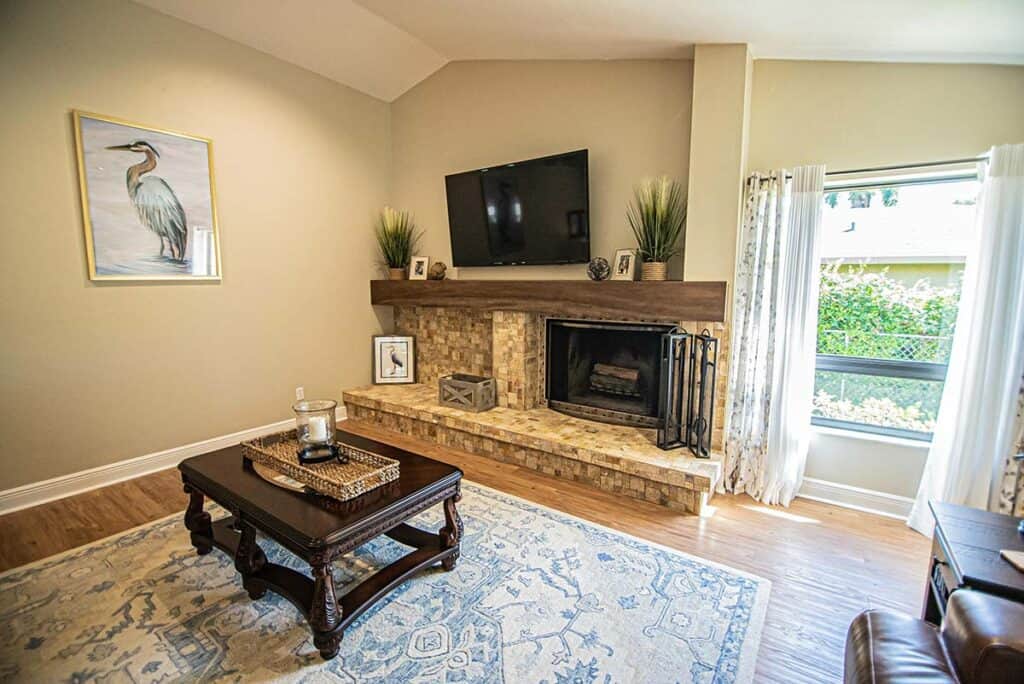
Medieval style combines rich textures, stone accents, and deep color palettes with functional modern elements. It adapts traditional medieval decor and furniture pieces to create spaces that hold both historical charm and present-day comfort.
Blending Old and New
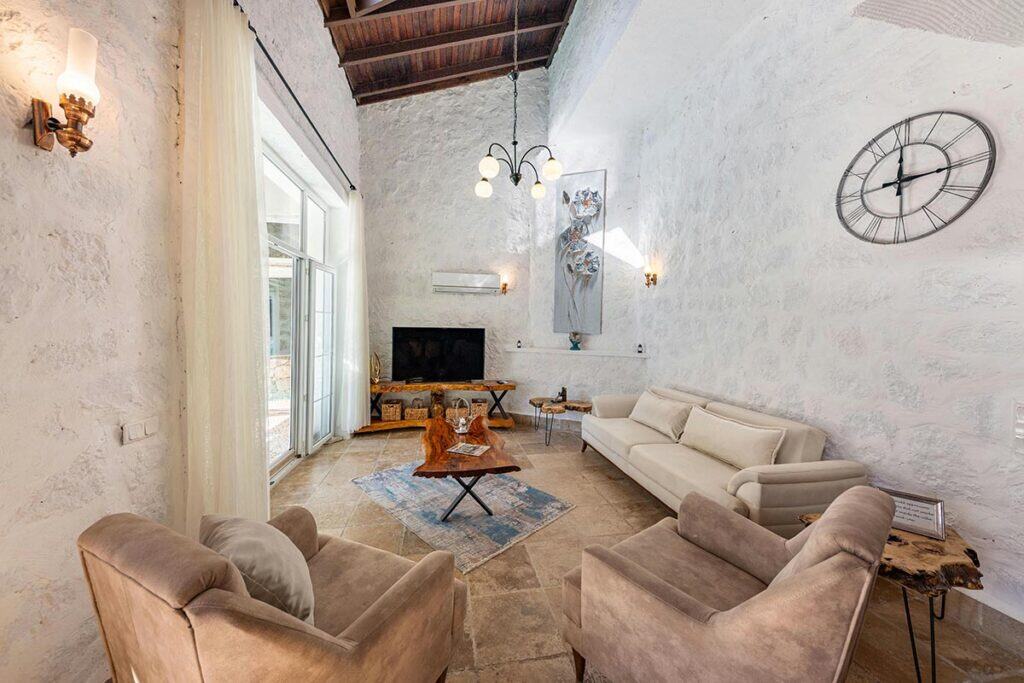
Integrating medieval design into modern interior design requires balance. The use of exposed timber beams or stone walls brings authenticity without overwhelming contemporary layouts. Walls painted in deep reds, greens, or browns reflect the medieval era’s earthy colors but are often softened by modern lighting.
Furniture pieces with carved wood and wrought iron can stand alongside sleek, minimalist items to maintain elegance without clutter. Incorporating medieval-inspired art or tapestries adds luxury while respecting space.
Modern technology should be subtly embedded. Heating, lighting, and smart home features can coexist in medieval-style rooms if concealed or designed to complement the rustic, robust feel.
Choosing materials is critical to sustaining medieval charm. Natural fabrics such as wool and linen in rich colors mimic the textures used in medieval homes. Heavy drapes or cushions in these materials enhance the tactile experience.
Stone, either real or good-quality faux, should be incorporated for walls, floors, or fireplaces to ground the space historically. Timber should be solid and visible, often reclaimed or distressed to echo medieval craftsmanship.
When selecting furniture, opting for pieces crafted from oak or walnut with iron accents ensures genuine medieval style. Avoid synthetic alternatives that can undermine authenticity. These materials contribute to both the durability and historical accuracy of the design.
Medieval Interior Design: A Recap
Medieval interior design embodies a timeless fusion of durability, artistry, and functionality, rooted deeply in historical needs and aesthetic traditions. Characterized by the bold use of stone, wood, rich textiles, and intricate details, it creates spaces that feel both enduring and evocative.
From the grandeur of vaulted ceilings and Gothic arches to the warmth of woven tapestries and heraldic motifs, medieval interiors offer a rich sensory experience shaped by craftsmanship and cultural identity.
Today, by thoughtfully integrating these elements with modern comforts, it is possible to honor the medieval spirit while creating living spaces that are both historically inspired and suited to contemporary life.




